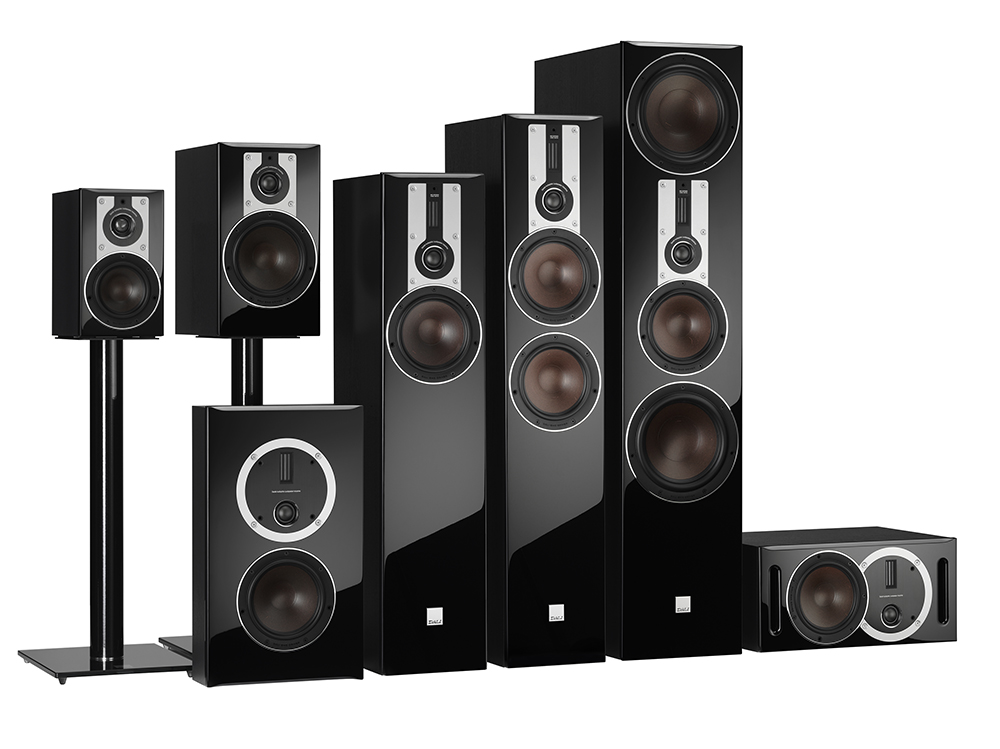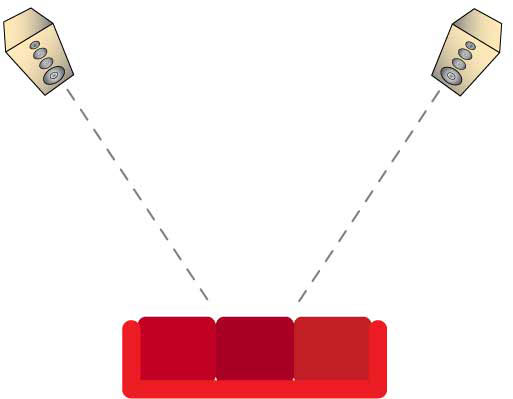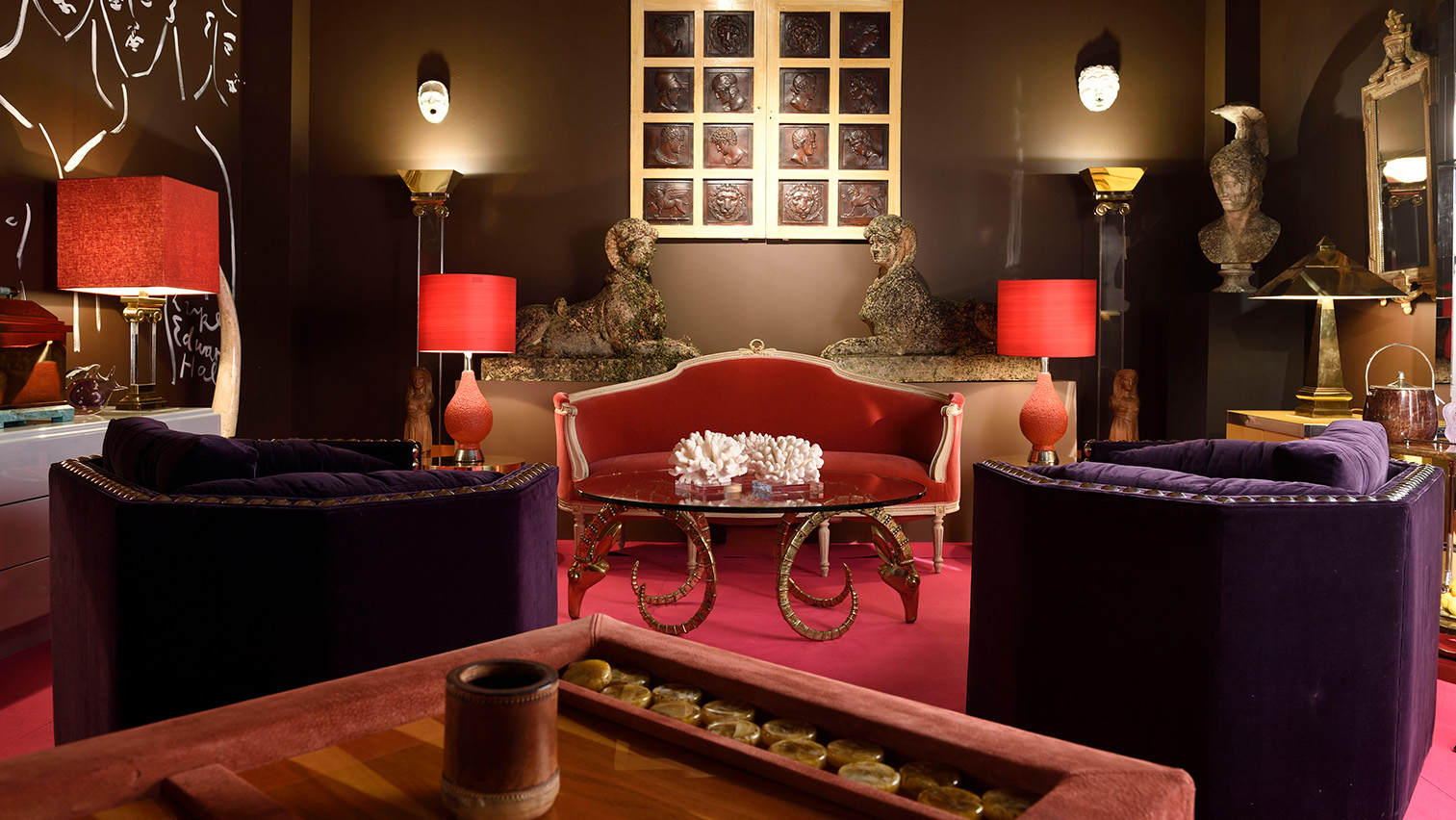You can’t just simply buy the biggest and coolest equipment and expect it to sound great in your room. If there’s one thing we’ve learnt from testing speakers of all sizes, it is that the acoustics of the room affect the sound more than any other component in the signal chain. Because of the interaction with the room, a smaller speaker can actually sound better in a given room than its bigger and more expensive big brother.

Speaker placement
A great way to find the optimal speaker placement is to use Cardas’ calculations. Their calculator can be found here, and you’ll notice that it’s only based on the width of the room, not the length. It may seem strange, but it works. Also note that the distance to the back wall of the speaker becomes very long; for practical reasons, it can be halved.
We had to pull the sofa further forward than we normally have it to get the bass to sit better.
Furniture against harsh overtones
All speakers are affected to a greater or lesser extent by the acoustics of the room. The overtone range can sound anything from silky smooth to bone-hard, depending on the materials in the room. A minimalist living room with little furniture will sound harsher than a densely furnished room, as the furniture breaks up the reflections in the room. Parquet flooring, which most people have today, will also sound louder than wall-to-wall carpet.

Room size determines bass response
Bass response is more dependent on the size of the room. The deeper in the frequency range the speakers go, the greater the problem with phasing and standing sound waves, so a speaker that should sound big and fat suddenly sounds bloated and unbalanced.
Also be aware that two speakers that on paper both go down to 20 Hz may have the energy distributed differently. One may have more pressure in the 60 Hz range than the other, and they will therefore react differently to acoustics and reflections from the walls. You may find that one can be placed closer to the back wall than the other without negatively affecting the sound.
A few simple tips
One thing is for sure, no two rooms sound the same and a speaker that works perfectly in one room may not work as well in another. You may need to take a few steps to maximise the sonic benefits.
Without going overboard with maths, bass traps, diffusers and absorbers, here are some simple things you can do.
1. Experiment with the placement of the speakers
Use a room calculator to get a starting point and move the speakers back and forth with mouse clicks to find the best compromise between tight bass and a big, open soundstage. Click the link below for more speaker placement tips.

2. You can never have too much furniture!
A good, big sofa and a couple of armchairs are great. Fabric is better than leather. If you have parquet or tiled floors, consider placing a rug between yourself and the speakers. This will absorb some of the early reflections and make the perspective clearer.
3. Absorbing panels
A good solution to get great acoustics is to hang a so-called absorber on each side wall, slightly in front of each speaker. They have the same effect as the suggested carpet, namely to reduce first reflections.
If you’re worried about aesthetics, you can get creative by, for example, covering a canvas with molton (stage fabric) and maybe even framing it. It’s also available in white that you can paint on, so you can get creative.
You can also buy ready-made noise-reducing pictures.

4. Use spikes!
Speakers sound best when they are firmly planted on the ground. Usually this means that they – or the speaker stands – should be on spikes.
If the speakers are placed on a carpet, make sure to press the speakers down hard so that the spikes go through the carpet and make contact with the surface underneath. If the speakers are on a parquet floor or other surface that you’re worried about damaging, you can place protective discs under the spikes. These are often included.

5. Digital room correction
Bass frequencies phased out by room modes need to be addressed in the acoustics, as they cannot be brought back with any form of digital room correction. However, room correction can still tighten up the soundstage and provide a more accurate stereo perspective.
Dirac Live is one of the best correction systems we know of and can be found, for example, in the miniDSP DDRC-24. But also in certain amplifiers, such as the NAD M10.


